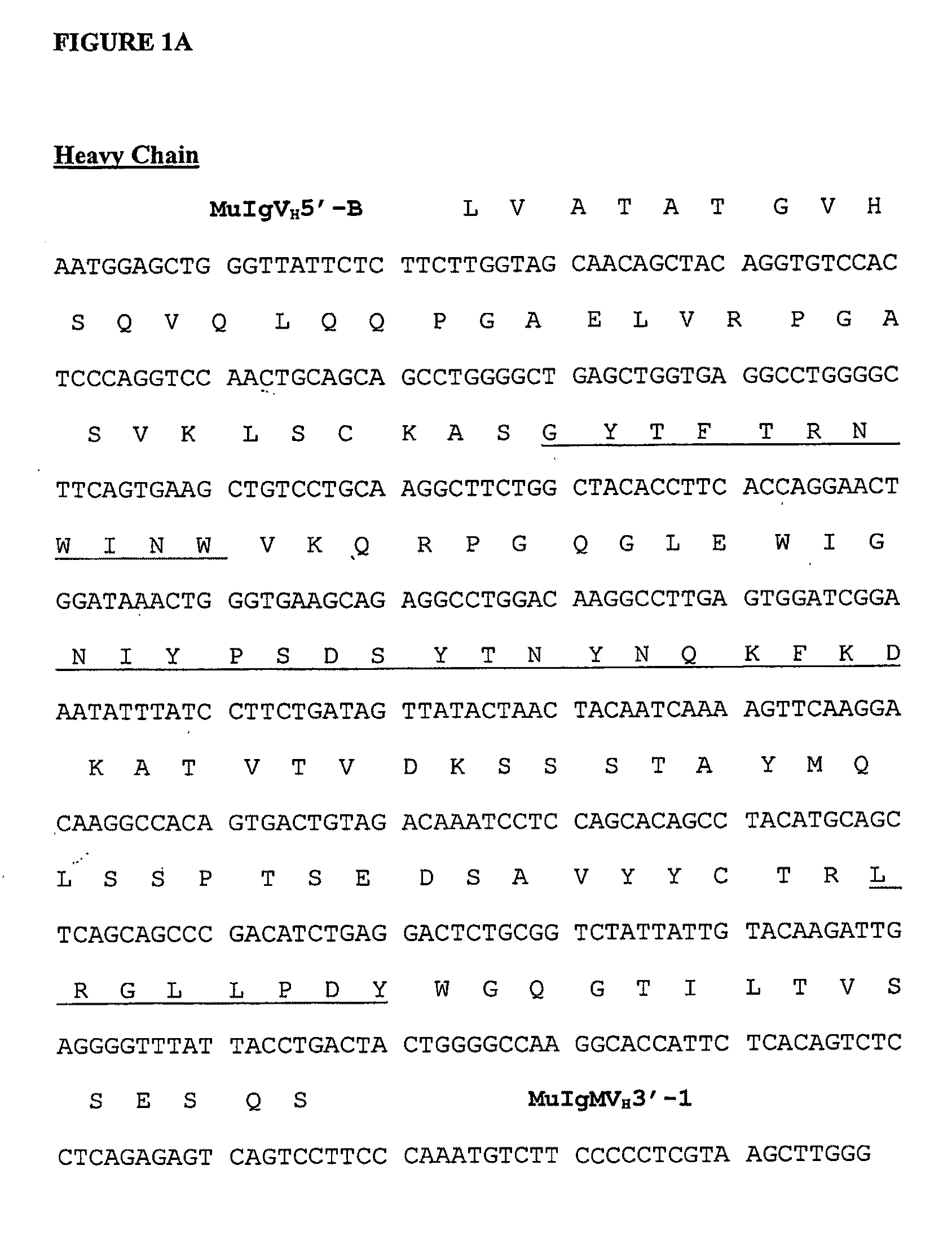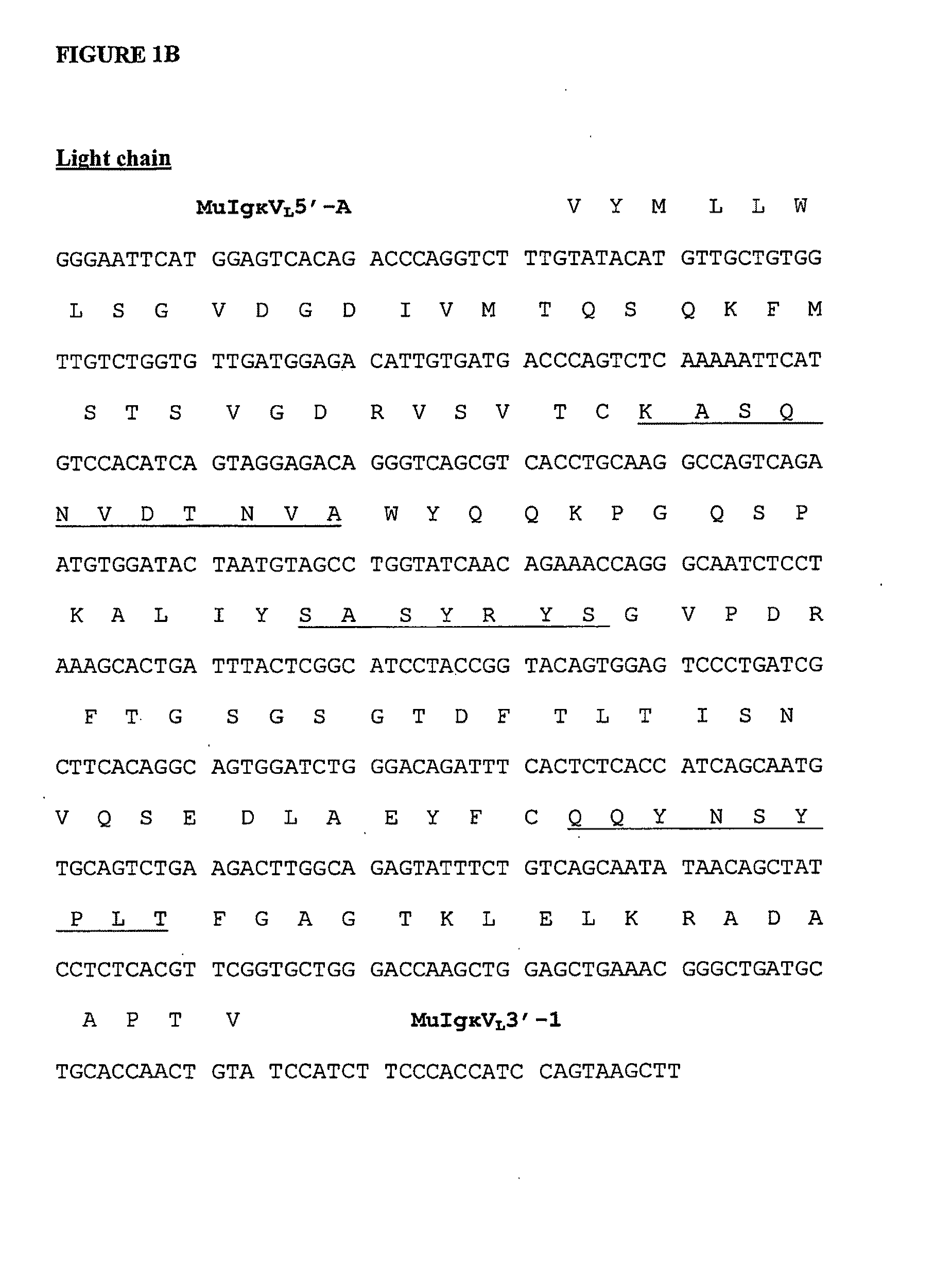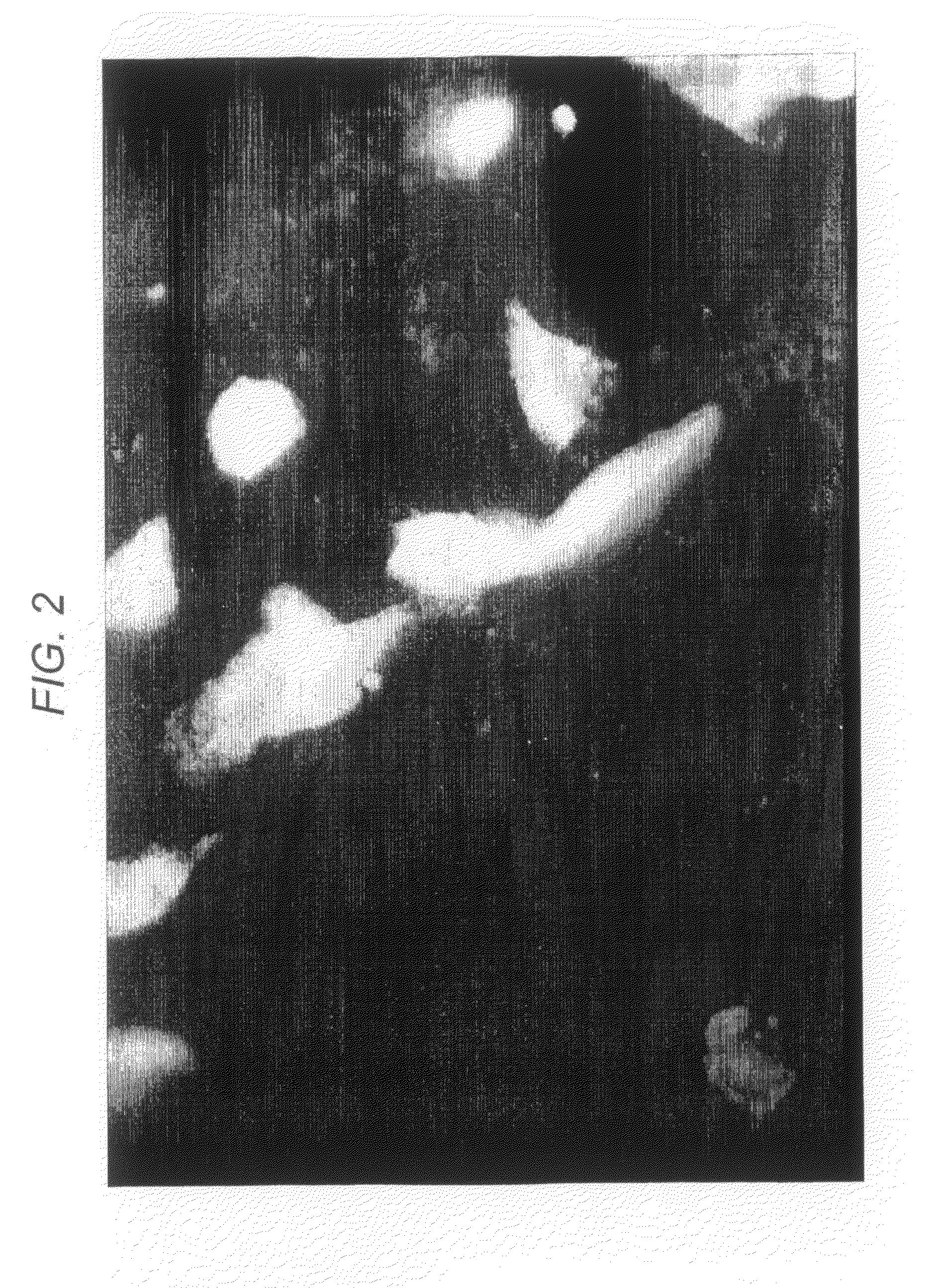Peptides for Treatment and Diagnosis of Autoimmune Disease
a technology of peptides and autoimmune diseases, applied in the field of peptides for treatment and diagnosis of autoimmune diseases, can solve the problems of more problematic conditions or diseases, morbidity and mortality, and compromise all systems and organs, and achieve similar or improved therapeutic and/or pharmacokinetic properties, improve protein structure and function, and enhance the passage of peptides
- Summary
- Abstract
- Description
- Claims
- Application Information
AI Technical Summary
Benefits of technology
Problems solved by technology
Method used
Image
Examples
example 1
Antibody Sequencing
Methods
Total RNA Isolation
[0305]Poly A+ mRNA was extracted from 109 frozen monoclonal cells, which secreted antibody recognizing anti-anti-TCR Vβ and an element of the GPI-linkage, using the Guanidinium isothiocyanate method. Total RNA isolation was carried out using the Ambion RNAqueous Kit (Cat No. 1912, Lot No. 019K0158). Approximately 0.3 mg of frozen hybridoma cells were resuspended in 5 ml lysis / binding solution. Following lysis 5 ml of 64% ethanol was added, mixed and the lysate / ethanol mixture was applied to RNAqueous filter units and centrifuged to bind the RNA to the filter matrix. The filters were then washed once with 700 μl Wash Solution No. 1 and twice with 500 μl Wash Solution 2 / 3, and centrifuged after each wash step with a final centrifugation step after the final wash. RNA was eluted from the filters by applying 2×60 μl preheated (95° C.) Elution solution to the centre of the filter and centrifugation. The eluated RNA was precipitated with 0.5×Vo...
example 2
Homodimer CDR Peptides
[0314]An N terminal cysteine was added to each of the hypervariable region sequences (CDR-L1-3 and CDR-H1-3, SEQ ID NOs:6 to 16) which were synthesised by Fmoc peptide synthesis and dimerised to form homodimers. Some of each of the homodimers was biotinylated; the biotinylated homodimers were then tested by fluorescence microscopy for their ability to bind to human pancreatic a cells (used as an indicator human tissue) by using fluoresceinated antibiotin as a second step reagent. It was found that homodimers from CDR-H2 (SEQ ID NO:8), CDR-H3 (SEQ ID NO:10) and CDR-L3 (SEQ ID NO:16) bound to the pancreatic α cells. The non-biotinylated homodimer peptides were then tested by ELISAs for their ability to bind to anti-TCR Vβ antibody and to cardiolipin as an indicator of phospholipids (Table 1).
TABLE 1Optical density readings for ELISAs showing binding of monoclonal anti-anti-TCR Vβantibodies or homodimer peptides, CDR-H2, CDR-H3 and CDR-L3 to anti-TCRVβ antibodies....
example 3
Identification of Autoantibodies In Vivo
[0315]Evidence for the presence in human sera of autoantibodies (represented by anti-anti-TCR VP and the peptides of this invention) that bind to anti-TCR Vβ antibodies is shown in Table 2. Since the autoantibodies are likely to become ubiquitous within the adult population, undetectable levels are most likely to be found amongst children. This is supported by the data in Table 2 which shows high levels in newly diagnosed Type I diabetic children compared to ICA positive and ICA negative controls.
TABLE 2Reactivity of sera from newly diagnosed diabetic and non-diabeticchildren against monoclonal anti-TCR Vβ antibody.TotalNumbernumber ofreactive againstTest / ControlMeanSubject Typesubjectsanti-TCR VβIndex range*IndexNewly diagnosed871.8-3.82.7 ± 0.8diabeticsNon diabetics1051.2-1.51.3 ± 0.1ICA positiveNon diabetics1031.2-2.11.6 ± 0.5ICA negative*The index range is derived by taking the ratio of the optical density measurements comparing 1 in 30 di...
PUM
 Login to View More
Login to View More Abstract
Description
Claims
Application Information
 Login to View More
Login to View More - R&D
- Intellectual Property
- Life Sciences
- Materials
- Tech Scout
- Unparalleled Data Quality
- Higher Quality Content
- 60% Fewer Hallucinations
Browse by: Latest US Patents, China's latest patents, Technical Efficacy Thesaurus, Application Domain, Technology Topic, Popular Technical Reports.
© 2025 PatSnap. All rights reserved.Legal|Privacy policy|Modern Slavery Act Transparency Statement|Sitemap|About US| Contact US: help@patsnap.com



